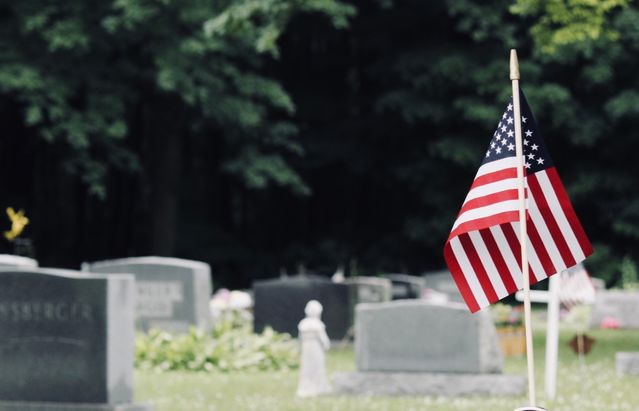Suicide
Why Research on Suicide Is a Vital Part of the Gun Debate
Data on suicide is often ignored but can inform policymakers in key ways.
Posted August 13, 2019 Reviewed by Abigail Fagan

With more than three dozen people killed in mass shootings in Texas, Ohio, and California, many US politicians are proposing gun regulations in hopes of curbing gun-related deaths.
Mass shootings are indeed a tragedy, however, it’s important to take a public health approach and look at what will make the largest impact on gun violence. Focusing solely on mass shootings may fail to address other problems like suicide, which is a particular concern. Researchers recommend using data on suicide to inform elected officials on effective policy such as permit-to-purchase laws, waiting periods, child access prevention laws, and extreme risk protection orders.
Suicide rates are rising in nearly every state. According to a report from the Center for Disease Control and Prevention (CDC), “during 1999–2016, suicide rates increased significantly in 44 states, with 25 states experiencing increases >30 percent.”
Suicides make up almost two-thirds of gun-related deaths. Nearly 25,000 people die each year by firearm suicide, according to data from the CDC. In 2017 alone, around 40,000 people died from guns, over 60 percent of which were from suicide.
While women attempt suicide more often, men are more likely to die by suicide because they choose more lethal means such as firearms. According to the Suicide Prevention Resource Center, “women are at a greater risk for suicidal ideation, attempts, and medically treated attempts than men.” However, researchers found that men complete suicide at a rate of 22.4 per 100,000 people, while women complete suicide at a rate of 6.1 per 100,000. In 2017, 56 percent of suicide attempts by men involved firearms, but firearms were only involved in 31 percent of attempts by women. Poisoning, overdose, and suffocation were means used more often by women than men. A report in the American Journal of Public Health found that firearms were the most lethal method with a completion rate of 82.5 percent.
Most people who unsuccessfully attempt suicide do not go on to die by suicide. One literature review summarizing 90 studies found that only 7 percent of people who have unsuccessfully attempted suicide eventually die by suicide. The vast majority have no further attempts.

Many people who attempt suicide do so within minutes of deciding to. In one study reported in the Journal of Clinical Psychiatry, researchers asked people who were hospital patients from a suicide attempt how long before their suicidal act they first started thinking about attempting. A shocking 47 percent said within 10 minutes of making the attempt.
Dr. Cassandra Crifasi, a faculty member in the Center for Gun Policy and Research at Johns Hopkins Bloomberg School of Public Health, recommends four regulations aimed at reducing suicide fatalities. They include:
- Permit-to-purchase laws. These laws only allow sales to someone with a valid license, while screening out individuals with severe mental illness or criminal history. Research published in the Journal of Preventive Medicine found a 15 percent reduction in firearm suicide rates when analyzing the implementation of this law in Connecticut and a 16 percent increase when Missouri repealed their permit-to-purchase laws.
- Waiting periods. These laws require an individual to wait a set amount of time after purchasing a handgun to access it. While insufficient evidence has been found that waiting periods decrease homicide rates, they have been shown to reduce rates of firearm suicide.
- Child access prevention laws. These require owners to store their guns in ways that prevent unauthorized or unsupervised access to firearms by youth or adolescents under a certain age. The most common method of suicide for those ages 10 to 19 is by firearm at 49 percent. One report found that states with child access prevention laws had an 8 percent lower rate of suicide among youth between 14 and 17 years of age compared to states without these laws. Firearm suicides by those ages 18 to 20 were also significantly lower.
- Extreme risk protection orders. These laws, sometimes referred to as "red flag" bills, allow family members or police to recommend temporary removal of firearms from those exhibiting behaviors that show they may be at risk of harming themselves or others. An analysis of this law implemented in Indiana, a population with an above-average risk of suicide, calculated that one life was saved for every 10 gun-removal actions. Similar results were found in Connecticut.
Researching the effects of firearms continues to be difficult. While many rely on intuition when making decisions, it is vital to use evidence when implementing new policy that for some, as is the case with firearms, may mean life or death. A special issue on gun violence was released in August 2019 in the Journal of Behavioral Medicine. Researchers said:
"As public health scientists, we believe that efforts to address gun violence should be based on scientific evidence. Just as policy changes associated with automotive safety, other preventive health recommendations, workplace safety, and air travel, have largely evolved from an empirical evidence base, so should policy changes or other measures developed to decrease the public health toll of gun violence. Unfortunately, while reports of gun violence have become part of the daily fabric of our society, development of an evidence base to help guide efforts around gun violence prevention has until recently failed to be a priority for the scientific community, demanded by the public, or supported by funders."
Citizens should remind their representatives that suicides are an important part of the discussion on gun regulation.
LinkedIn Image Credit: By Nicole S Glass/Shutterstock


